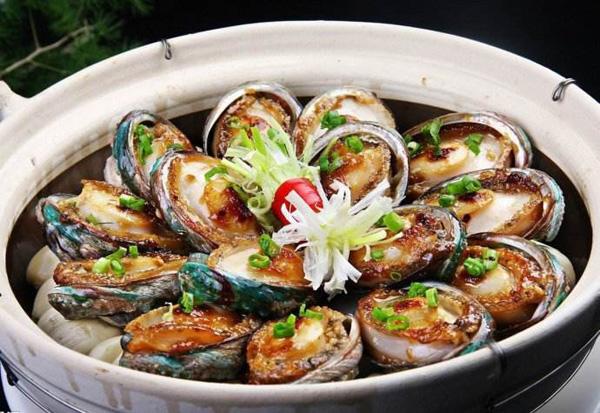ABOUT GUANGZHOU

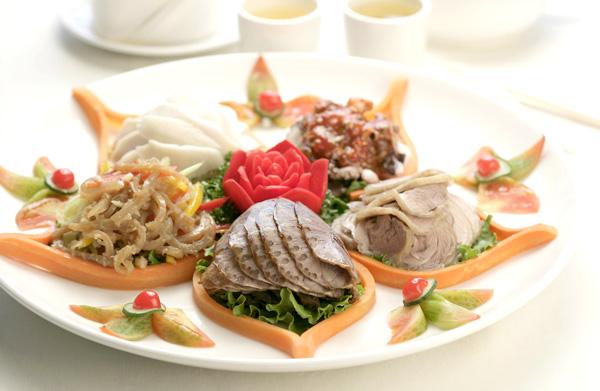
Cantonese cuisine comes from Guangdong province and is one of the Eight Culinary Traditions of Chinese cuisine. Its prominence outside China is due to the large number of emigrants from Guangdong. Chefs trained in Cantonese cuisine are highly sought after throughout China.When Westerners speak of Chinese food, they usually refer to Cantonese cuisine.
Guangzhou, the capital of Guangdong province, has long been a trading port and many imported foods and ingredients are used in Cantonese cuisine. Besides pork, beef and chicken, Cantonese cuisine incorporates almost all edible meats, including offal, chicken feet, duck's tongue, snakes, and snails. However, lamb and goat are rarely eaten, unlike in the cuisines of northern or western China. Many cooking methods are used, with steaming and stir frying being the most favoured due to their convenience and rapidity. Other techniques include shallow frying, double steaming, braising, and deep frying.
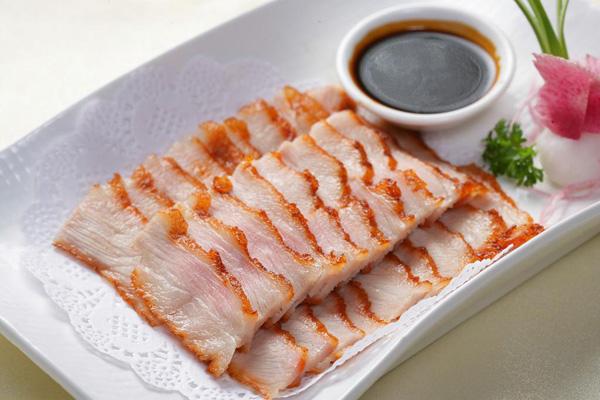
For many traditional Cantonese cooks, the flavours of a finished dish should be well balanced and not greasy. Apart from that, spices should be used in modest amounts to avoid overwhelming the flavours of the primary ingredients, and these ingredients in turn should be at the peak of their freshness and quality. There is no widespread use of fresh herbs in Cantonese cooking, in contrast with their liberal use in other cuisines such as Sichuan, European, Thai or Vietnamese. Garlic chives and coriander leaves are notable exceptions, although the latter are usually used as mere garnish in most dishes.
Traditional dishes
Some items gain very intense flavours during the drying / preservation / oxidation process and some foods are preserved to increase their shelf life. Some chefs combine both dried and fresh varieties of the same items in a dish. Dried items are usually soaked in water to rehydrate before cooking. These ingredients are generally not served a la carte, but rather go with vegetables or other Cantonese dishes.
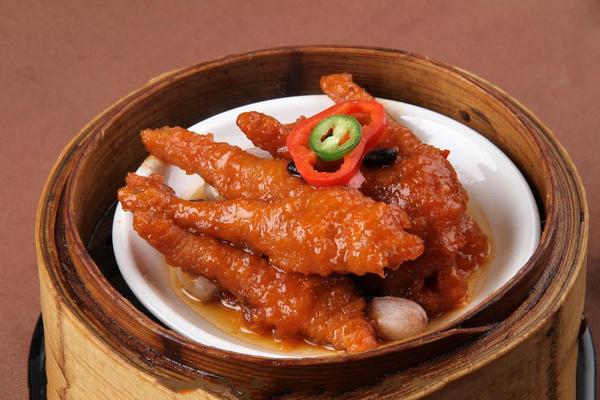
Deep fried dishes
A number of dishes have been part of Cantonese cuisine since the earliest territorial establishments of Guangdong. While many of these are on the menus of typical Cantonese restaurants, some simpler ones are more commonly found in Chinese homes. Home-made Cantonese dishes are usually served with plain white rice.
Old Fire Soup
Old fire soup, or lou fo tong (simplified Chinese: 老火汤; traditional Chinese: 老火湯; pinyin: lǎohuǒ tāng; Jyutping: lou5 fo2 tong1) in the Cantonese dialect (literally meaning old fire-cooked soup) is usually a clear broth prepared by simmering meat and other ingredients over a low heat for several hours. Chinese herbs are often used as ingredients.
Soup chain stores or delivery outlets in Cantonese-dominated cities such as Hong Kong serve this dish due to the long preparation time required of slow-simmered soup.
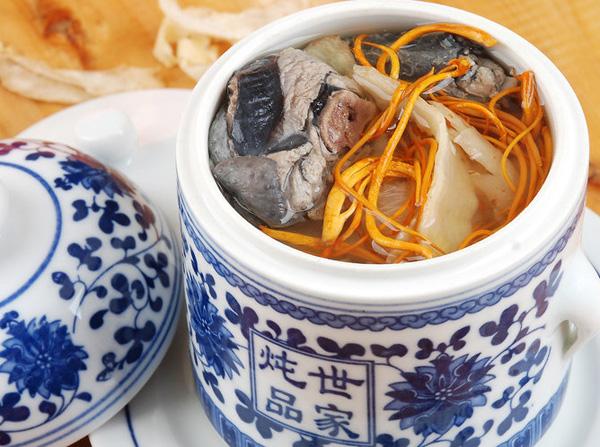
Seafood
Due to Guangdong's location on the southern coast of China, fresh seafood is prominent in Cantonese cuisine, and many Cantonese restaurants keep aquariums or seafood tanks on the premises. In Cantonese cuisine, as in cuisines from other parts of Asia, if seafood has a repugnant odour strong spices are added; the freshest seafood is odourless and, in Cantonese culinary arts, is best cooked by steaming. For instance, in some recipes, only a small amount of soy sauce, ginger, and spring onion is added to steamed fish. According to Cantonese cuisine, the light seasoning is used only to bring out the natural sweetness of the seafood. As a rule of thumb, the spiciness of a dish is usually inversely proportionate to the freshness of the ingredients.
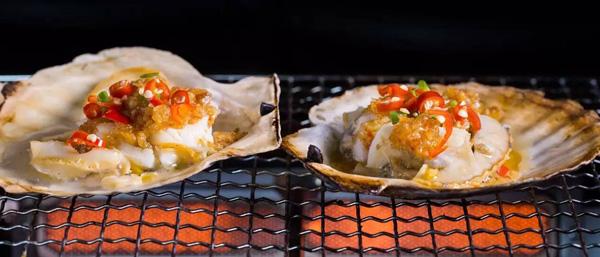
Dessert
After the evening meal, most Cantonese restaurants offer tong sui (Chinese: 糖水; pinyin: táng shuǐ; Jyutping: tong4 seui2; literally: "sugar water"), a sweet soup. Many varieties of tong sui are also found in other Chinese cuisines. Some desserts are traditional, while others are recent innovations. The more expensive restaurants usually offer their specialty desserts.
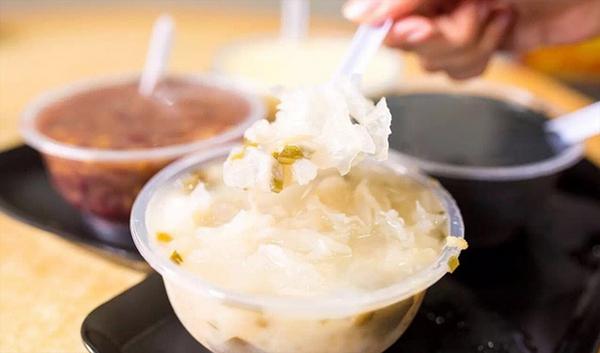
Delicacies
Certain Cantonese delicacies consist of parts taken from rare or endangered animals, which raises controversy over animal rights and environmental issues. This is often due to alleged health benefits of certain animal products. For example, the continued spreading of the idea that shark cartilage can cure cancer has led to decreased shark populations although scientific research has found no evidence to support the credibility of shark cartilage as a cancer cure.
